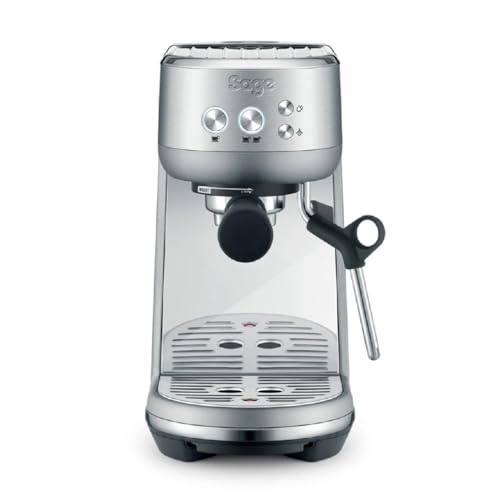What to Look For in a Commercial Espresso Machine

When you are looking to purchase a commercial coffee machine, there are a number of things to take into consideration. The type of espresso machine that is ideal for your establishment will be determined by the quantity of use, the purpose, and the barista's skill.
A double boiler system gives the ability to brew as well as steam simultaneously. It also speeds up the recovery time between pulls. Proportional-integral-derivative (PID) temperature control manages on/off cycles for optimal boiler temperatures.
Productivity
A commercial espresso machine can handle a greater volume of coffee than a home machine. If you expect a home espresso maker to perform in a professional setting would be an invitation to disaster.
A commercial machine that is of high quality can provide up to 100 coffee cups per hour during peak hours. This is a huge benefit for busy workplaces, preventing employees from having to wait for a long time to get their coffee.
Coffee machines can help workers bond. Teams of workers often take turns getting coffee for one another, which could promote collaboration and teamwork in the workplace. Having a dedicated space to enjoy coffee can help new workers to feel at ease in the workplace, removing any barriers between them and senior employees.
Commercial espresso machines are available in different sizes to meet a range of needs. Certain models are completely automated while others are able to pre-program espresso shots, so that operators don't have to guess the correct size of each shot. This is particularly important for businesses with untrained baristas, since inaccurate shots can greatly affect the quality and taste of espresso. In addition, it is best to purchase ethically-sourced and commercial espresso machines which support the communities where coffee is grown. This will ensure that the product is of good quality and minimizes the negative impact on the environment.
Safety
Espresso machines are massive heavy pieces of equipment that can cost as much as a new compact car. They're also designed to churn out hundreds of drinks and shots in the day. These high volume operations can create unique health and safety hazards for staff members, so it's important to take into account the potential hazards that come with an espresso machine that is commercially used.
It's important to keep it in mind that commercial espresso machines are likely to be operating with warm water, which could contribute to the growth of bacteria. Coffeee that is not maintained properly and isn't regularly cleaned or descaled can start to build up spent espresso, which could turn rancid and could potentially cause illness if consumed by customers. A commercial espresso machine that has a steam wand without an effective seal may permit bacterial growth in the milk frothing mechanism, because it might not be able reach temperatures high enough to eliminate all bacteria.
When choosing a commercial espresso machine, it is important to think about the kind of drinks you plan on serving and how many cups per hour your space can handle. You should look for machines with automated features which will allow you to serve your customers their preferred coffee beverage. You should look for a guarantee that includes both labor and parts. This will ensure that any technical problems can be resolved quickly.
Energy Efficiency
The power requirements of commercial espresso machines are substantially higher than home models. Professional espresso machines are more heavy and have larger boilers that can support several group heads for normal cafe production. They also operate at a higher ambient temperature and are often located in an indoor setting (such as a coffee shop or restaurant) where the electronics could quickly overheat, resulting in malfunctioning machines.
The boiler of a commercial espresso machine provides heat and storage for pressurized water that is supplied by an electric pump. This water is then used to brew and steaming espresso. The boiler is comprised of several copper tubes that are heated by electric elements. When the brew level sensor senses that the water has reached its desired level, a solenoid valve opens to allow the boiler to be filled with water that is fresh and the heating element shuts off.
There are four different types of espresso machines. They are distinguished in their capacity to be brewed or steamed by using TB (brewing-only), TX (twin-boilers), HX (double automated), and DA (double automated). TB and TX machines have stable brew temperatures, while DA allows for rapid steaming using only one boiler. HX machines are used by many cafes since they are the best in both brew and steam temperature.
Maintenance
Commercial espresso machines require regular maintenance similar to cars. They need to be maintained to function efficiently and smoothly. If you ensure that you maintain your machine in good condition, it will provide you a better tasting espresso and last longer.
Cleaning your espresso machine is an everyday ritual, but it's vital to clean certain parts on a greater scale. There will be leftovers from coffee grounds and other milk products that could cause the machine to break down over time. Regular cleaning can help prevent this and keeps your espresso machine functioning at its best.
Most commercial espresso machines require descaling every three months. This procedure requires a few extra steps in comparison to regular cleaning. You'll want review the manual to ensure that you follow the directions. Descaling is the process of using a solution that dissolves the scale in the water tank. You'll need a container to finish this task. In some units you might also require a container to be placed under the coffee spouts. Follow the directions for your specific model.
Another aspect of maintenance is changing the water filters. It's easy to overlook but it's crucial to avoid accumulating mineral deposits. Check for calcification, which can be difficult to remove from the spray head.
